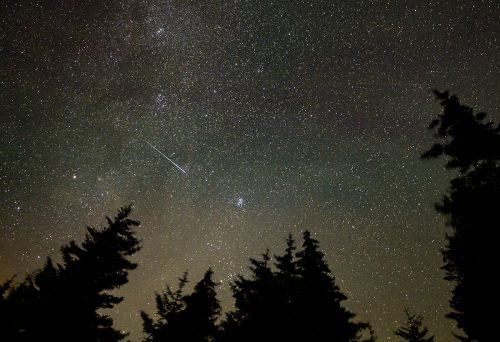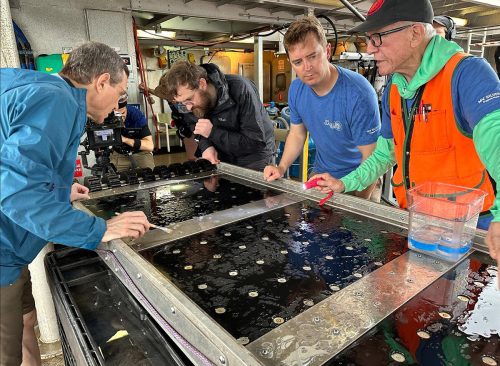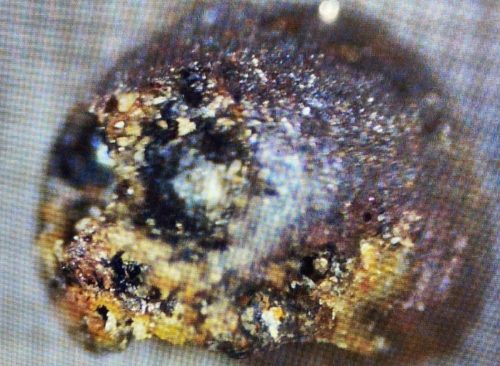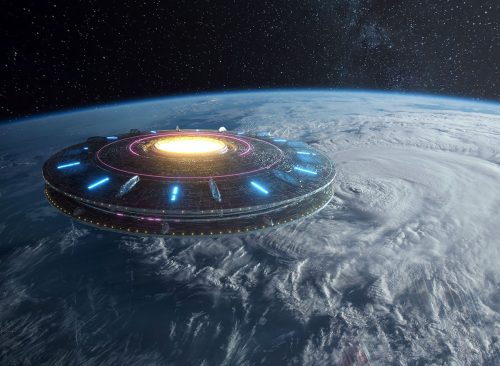Possible Alien Evidence? Harvard Physicist Finds Mysterious Metal Spheres.
He wants to make sure.

In 2014, Harvard physicist Avi Loeb—a consultant to the new Pentagon office tasked with investigating reports of UFOs—traveled to Papua New Guinea, looking for pieces of a rare meteor that he believed might carry evidence of alien life. With a research team, Loeb found 50 strange metallic spheres on the ocean floor, some no more than a few millimeters across, the Daily Beast reported last week. Were they evidence of extraterrestrial life? Read on to find out what Loeb—and his critics—contend.
1
How Fragments Were Located

The potential interstellar meteor, named CNEOS1 2014-01-08, struck Earth nine years ago, moving up to 37 miles a second as it neared the planet. To find the location where it struck, Loeb used data from U.S. military missile-warning satellites that often detect meteorites while monitoring the skies for rocket launches. Loeb convinced the Pentagon to release complete data for CNEOS1 2014-01-08, which indicated it might be the hardest object of its kind ever recorded. It was so hard, Loeb thought it might be an alien probe.
2
June Mission Pulled Fragments From Ocean Floor

Loeb then checked earthquake sensors in the South Pacific, narrowing CNEOS1 2014-01-08's probable impact zone to an area of the ocean off the coast of Manus Island in Papua New Guinea, the Daily Beast reported. With a team of 30—and $1.4 million in funding from the entrepreneur Charles Hoskinson—Loeb set out on June 14 on a two-week mission to find the remains of the meteor-or-craft. On a ship fitted with special magnets, the team ultimately brought up the 50 metal pieces.
3
Meteor or Alien Craft?

The team analyzed the "spherules" with electron microscopes in a laboratory, then shaved off fragments, vaporized them and analyzed the gasses they produced. The scientists determined some of the metal pieces are around 14 billion years old. That's as old as the universe itself—and nearly 10 billion years older than Earth. It's possible that means the shards were indeed pieces of a meteor. At the same time, they have "evidence of construction," the Daily Beast says, which indicates they could be part of an alien craft.
4
Critic: Not Enough Data

"We simply don't have enough data to have any compelling explanation for the fireball tracked by the Department of Defense in early 2014," said Douglas Vakoch, head of METI International, which develops attempts. He told The Daily Beast the spherules are more likely to be "Earth trash"—the metallic byproduct of "human-generated pollution." Perhaps tellingly, the spherules don't contain nickel, which are a common ingredient in planetary material. "These spheroids may not even come from space," Vakoch said.
5
Further Intrigue: The "Mothership" Report

Loeb has said he doesn't necessarily believe there is life beyond Earth. He just wants to thoroughly investigate that possibility. The physicist has recently surfaced in headline news for co-authoring a March report by the AARO, the new Pentagon office charged with investigating reports of UFOs. That month, the office released a report saying an alien "mothership" could be observing Earth and spawning smaller craft to take a closer look, similar to human space exploration. "An artificial interstellar object could potentially be a parent craft that releases many small probes during its close passage to Earth, an operational construct not too dissimilar from NASA missions," the report says. "These 'dandelion seeds' could be separated from the parent craft by the tidal gravitational force of the Sun or by a maneuvering capability." "Whether we live in such a reality or not is not a philosophical question, we just have to look out," said Loeb in the report.














